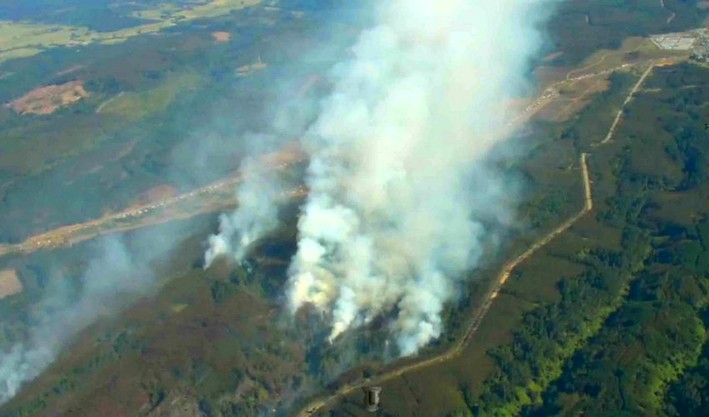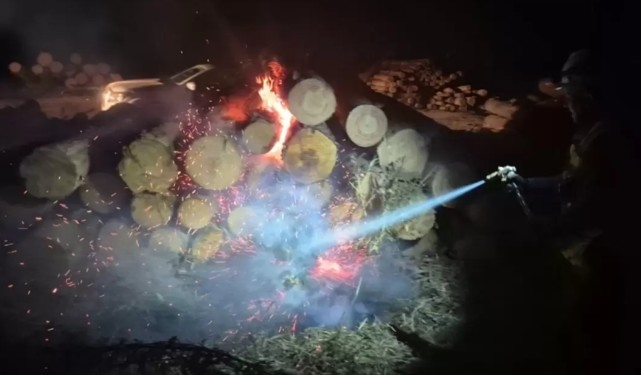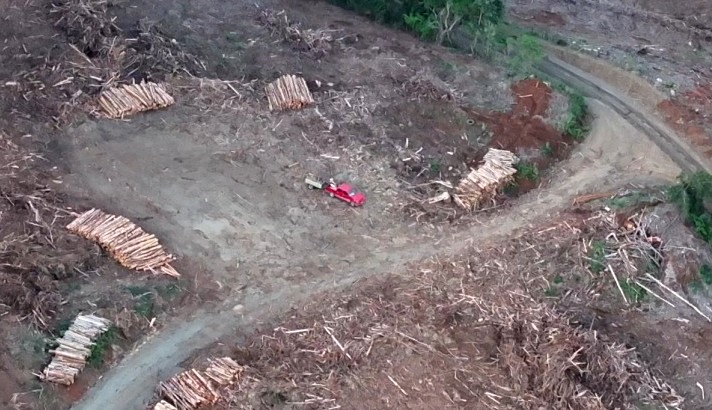Forest Fires: Municipalities Lacking a Communal Emergency Plan Explain the Shortfall
Just before the start of the forest fire season, three municipalities in the Biobío region: Los Álamos, San Rosendo, and Tucapel still do not have an approved Communal Emergency Plan, leaving thousands of residents at risk of fires or any catastrophe.
The Communal Emergency Plan is a means through which actions during a crisis are coordinated, featuring clear evacuation routes, safe zones, available resources, and communication protocols, making it essential.
Each municipality is obligated to develop its plan through the Risk and Disaster Management Unit (UGRD), according to Law 21.374, which established the National Disaster Prevention and Response System (Senapred).
Biobío has been one of the regions most affected by summer fires in recent years; hence, the lack of measures and planning raises concerns and puts pressure on the authorities of these municipalities, who are racing against time.
Juan Carlos Escobar, head of the risk and disaster unit of the Tucapel Municipality, commented on the matter: "The municipality is in the process of developing a Communal Emergency Plan, which is being worked on by the Risk Management Unit. We are approximately 40% complete and should have it approved by March."
However, this highlights the resource gap in the municipalities, as while Concepción, Penco, and San Pedro de la Paz have updated plans, drills, and coordinated strategies, the mentioned sectors lag behind due to a lack of assets, as is the case with Los Álamos.
"We had not submitted it due to a lack of resources; we hoped to do it with a consulting firm, but we couldn't. We applied for Senapred's tenders to hire a professional to review the plans or the consulting firm; we weren't selected either," commented Matías Virquilao, head of Risk Prevention and Control Management of Los Álamos, on the matter.
Similarly, Virquilao explained that the previous plan submitted was in 2022, and the current one will include areas not previously considered.
"We included the coastal area measuring at elevation 30, where we have eight families at potential risk of tsunami," he specified.
Senapred has emphasized the importance of each sector in Biobío having the obligation to have an Emergency Plan in place promptly before the start of the summer season, considering the catastrophes caused by high temperatures and increased drought in the region in recent years.
Senapred's Call
In an article published a few days ago by Diario Concepción, the regional director of Senapred Biobío, Alejandro Sandoval, explained that the institution operates as a coordinator for the agencies of the National Disaster Prevention and Response System, especially during high-risk periods like summer.
He indicated that coordination is maintained year-round through two pillars: the Risk Management Table, which brings together Conaf, Corma, municipalities, Armed Forces, and other actors; and the Disaster Risk Management Committees (Cogrid) at the regional, provincial, and communal levels.
However, he emphasized that each municipality must fulfill its part: "Municipalities have the legal duty to have their Communal Emergency Plan and their Disaster Risk Reduction Plan. It is they who establish what capacities they have and with whom they will coordinate in the face of a threat." In this task, Los Álamos, San Rosendo, and Tucapel have not yet completed the process.
He also highlighted that municipalities must provide logistical support and carry out evacuations if the fires warrant it. "Firefighters, Conaf, and private resources fight the fire, but municipal support is crucial, especially for evacuating and assisting the population," he stressed.
Source:Diario Concepción

















